
The 1860 Henry Rifle is among history's most influential firearms designs and continues to soldier on today.
Why the 1860 Henry Rifle remains important:
- The first commercially successful repeating rifle.
- Basically an improved Volcanic Rifle.
- Design enhanced with a self-cocking mechanism.
- Ammunition also upgraded to .44 Henry Rimfire.
- Saw action in the Civil War and the American West.
- The predecessor of the iconic Winchester rifle line.
- Henry and Uberti offer modern-day replicas.
- Contempary rifles chambered .44-40 WCF and .45 Colt.
When Benjamin Henry began tinkering with repeating rifles in the mid-19th Century, he was working with an old concept. Predating the Volcanic Rifle he improved to become the 1860 Henry Rifle, the idea of a long-gun capable of multiple shots off a single loading was more than 200-years-old in execution. However, examples such as the Lorenzoni System and Lagatz Rifle were as rare as baths back then, particularly due to their exceptional cost compared with traditional muzzleloaders of the time.
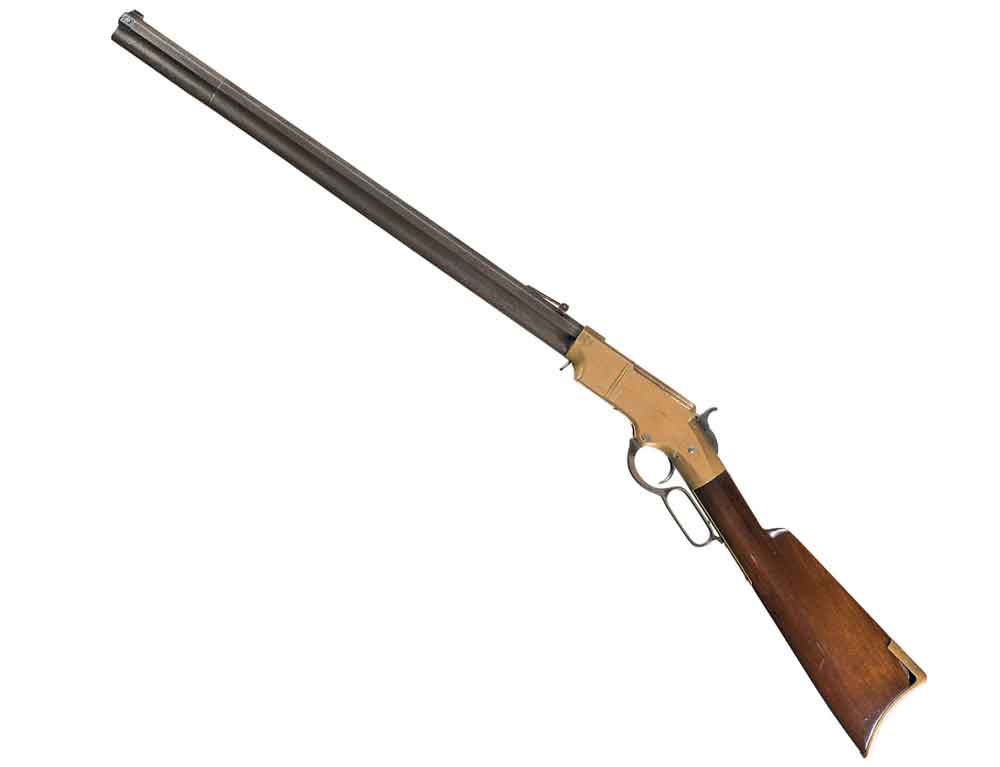
Where the brass-receiver beauty (there was also an early iron-framed model) left its mark was as the first commercially successful repeating rifle. At nearly three-times the coast of the Springfield Model 1861, the predominant military arm of the day, a Henry still wasn’t cheap. Performance preceding price, however, the common man was willing to scrimp and save and pony up to harness the advantage the repeater offered.
Gunmakers took notice, which led to the other great success of the 1860 Henry — it became the pattern of the modern lever-action rifle and soldiers on today. Bits and pieces seen in modern gun designs, this simple and elegant repeater continues to exert influence and arguably remains one of the most important designs to come down the pike.
Brief History of 1860 Henry Rifle
At its heart, the Henry is Walter Hunt’s lever-action 1848 Volition Rifle (later Volcanic Rifle) with two main improvements. Henry (the man) enhanced the original design with a self-cocking mechanism that worked in concert with the lever-action. A simple advancement, it vastly improved the 1860 Henry’s rate of fire to the point there simply wasn’t a long gun of the era that could match it.
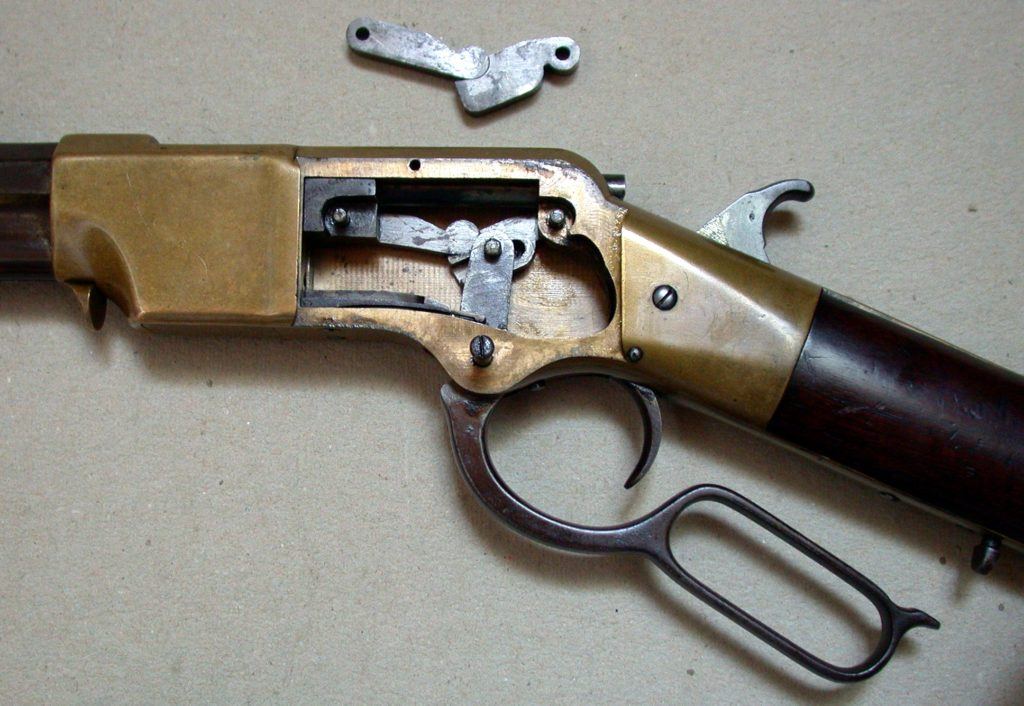
Furthermore, the New Haven Arms Company's (what eventually became Winchester) plant manager upgraded the rifle’s ammunition to .44 Henry Rimfire — as the name suggests, a cartridge of his design. Albeit moderately powered compared to other self-contained metallic cartridges of the day, the big-bore cartridge was leaps and bounds better than what the Volcanic Rifle previously attempted to spew — Rocket Ball. Innovative in concept, the ammo endeavored to integrate the propellant directly into the bullet itself; the results were fickle ignition and spit-wad-level power — less than a modern mouse gun, except from a rifle.
The advancements of the 1860 Henry Rifle wrought had an immediate impact and the gun almost instantly left its mark on the pages of history. Though never formally adopted nor widely used (maybe around 7,000 saw action), the 15-round, 24-inch barreled repeater developed mythical stature in the American Civil War, out-gunning anything it met on the battlefield. Furthermore, had a devastating effect on the American frontier, particularly in the hands of Sioux, Cheyenne and Arapahoe warriors in the Battle of the Little Bighorn. The U.S. Army’s single-shot Model 1873 “Trapdoor” Springfield was no match, especially firing jam-prone copper case ammo.
Despite valorous showings in these and other engagements, the 1860 Henry Rifle was not without its faults. Chief among them was, in hindsight, an ill-conceived tubular magazine. Open to the world at the bottom, the magazine was an excellent exposure point for grit, grim and everything else that might foul the follower and jam a Henry at the wrong time. Moreover, the 1860 Henry did not have a fore-end stock. A small point for shooters who might use the rifle exclusively for hunting, but awful tough on a fella’s hands when running the gun hot in the heat of battle.
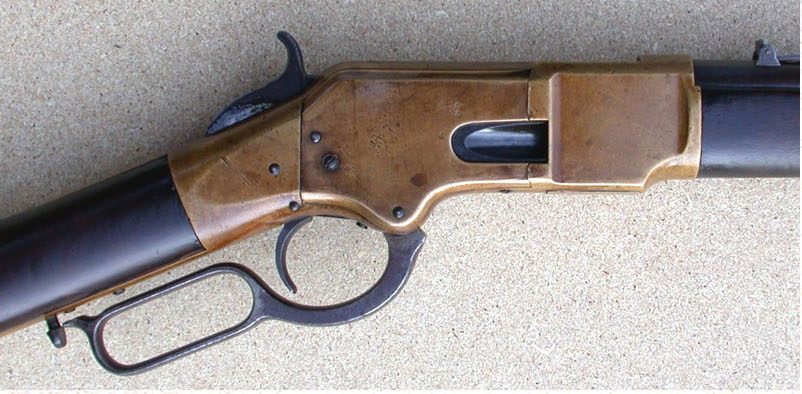
Undesirable as these traits might have been, solving the issues of the 1860 Henry Rifle proved serendipitous, spawning perhaps the most famous line of lever-actions in history — the Winchester rifles. Through the talents of designer Nelson King, the next evolution of the Henry was the Model 1866 “Yellow Boy.” Essentially an 1860, it featured a wooden fore-end and sealed magazine, which resolved the two most pressing issues with the earlier rifle. Additionally, King added a handy loading gate, a necessity with the exposed follower omitted, which made reloading much simpler and faster.
From there it was off to the races with Winchester evolving and innovating off the original 1860 concept to create some of the most storied rifles of all time — the 1873 (the rifle that won the West), 1876, 1886 and so on. The guns went on to conquer the American West, fight in conflicts across the world and firmly leave the 1860's footprint across the globe.
Collecting 1860 Henry Rifle
In 2013, a rarity crossed the block at the Rock Island Auction Company — an iron-frame 1860 Henry Rifle. For die-hard collectors, the opportunity was up there with getting a crack at a Honus Wagner baseball card or a Guttenberg Bible. They bid for the rifle that way too. When the dust settled, one of the most sought-after firearms in the world left the legendary auction house to the tune of $603,750. At the time, it was the most ever paid for a 19th-Century American-made rifle. If another such specimen ever went up for sale there’s a fair chance it could beat that mark.
Granted, iron-frame Henrys are phantoms (it’s estimated less than 400 were ever made), thus a hot ticket. But the garden variety brass Henrys are by no means bargain basement. RIA has three set for their September 2018 Premiere Auction and each is expected to bring in $30,000 to $45,00 apiece. That isn’t beanbag nor for the anemic of bank account.
Going The Replica Route
Thankfully, you needn’t go real McCoy to enjoy working the lever on a piece of American history. Henry Repeating Arms and Uberti-USA offer much more affordable options, manufactured to modern specifications that don’t require white gloves and a climate controlled environment to enjoy.
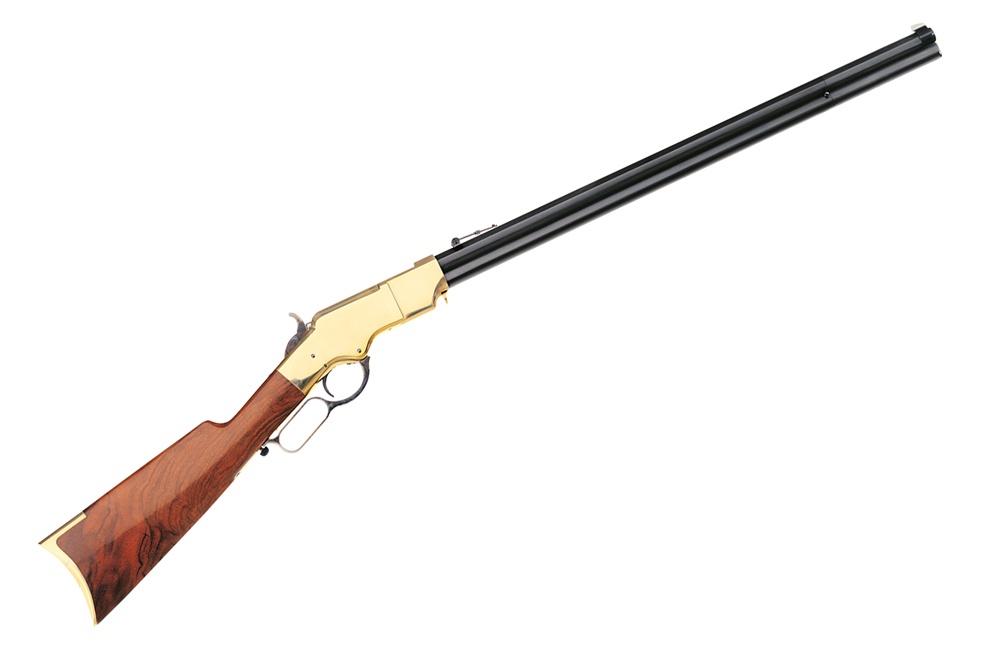
Given the demand for 1860 Henry Rifles isn’t at Civil-War levels nowadays, guns tend to run on the expense end — even compared to other replica or modernized version of classic lever-actions. Depending on model, the American made Henry’s New Original Henry runs $2,415 to $3,870. Slightly less expensive, the Italian manufactured Uberti options still run on the steep side at $1,369 across the board.
Thoroughly modern, the guns stay true to many of the aspects of the original 1860 Henry Rifle. To this end, Henry and Uberti’s rifles are both toggle-link lever-actions (with lever locks) outfitted with octagon barrels, graduated ladder rear sight, half-cock positions for the hammers and tubular magazines with followers. Of course, they also offer brass frames, which, aside from the history of the 1860, attracts many to the rifle.
Authentic to a point, there are a number of contemporary tweaks. The available chamberings are perhaps the most notable. Allowing .44 Henry Rimfire is near as rare as the rifles that shoot them, both gunmakers opted to chamber their guns for rifle/pistol-caliber .44-40 WCF and .45 Colt. More powerful than the original rimfire, it is still possible to match .44 Henry ballistics with the .44-40 for the sake of authenticity.
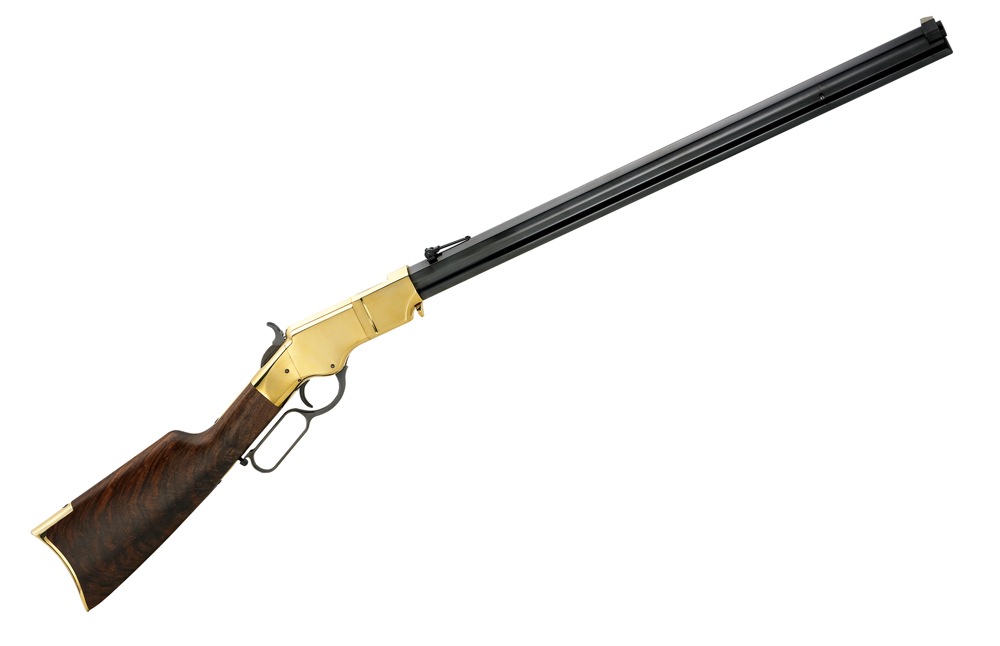
Given cartridge length, you won’t get a full 15-rounds out of a modern Henry, no matter what you work the lever on. The closest you’ll come is 13+1. Furthermore, the gunmakers have spinoff models that greatly break from the original Henry’s configuration. Each company makes a carbine variation: Henry’s 20-inch barreled Rare Carbine and Uberti’s 18-inch barreled Trapper. Additionally, Henry makes the Silver Deluxe Engraved Edition 1860, which nearly teeters on looking like a completely different rifle.
Even if you can't buy a down the line facsimile of the 1860 Henry Rifle, the respected gunmakers get close enough to the original that it's hardly worth the notice, and no less entertaining.
Parting Shot
Classic firearms are difficult to define, there’s a possible argument plenty of the determination lies in the eye of the beholder. Speak of iconic guns things become clearer. Engineering masterpieces, these one-of-a-kind guns go on to earn not only timeless popularity, but redefine their class of firearms — perhaps even the gun world itself. When you think about it’s not difficult to muster one to mind — 1911, Model 1897 Shotgun, M1 Garand, Colt Patterson and, most certainly, the 1860 Henry Rifle. The simple repeater’s reach far exceeds its six years of manufacture and shaped more than the art and science of gun design. Plain and simple, the brassy rifle and its lineage helped fashion the world we know today.

Next Step: Get your FREE Printable Target Pack
Enhance your shooting precision with our 62 MOA Targets, perfect for rifles and handguns. Crafted in collaboration with Storm Tactical for accuracy and versatility.
Subscribe to the Gun Digest email newsletter and get your downloadable target pack sent straight to your inbox. Stay updated with the latest firearms info in the industry.

![Best Concealed Carry Guns In 2025 [Field Tested] Wilson Combat EDC X9S 1](https://gundigest.com/wp-content/uploads/Wilson-Combat-EDC-X9S-1-324x160.jpg)


![Best 9mm Carbine: Affordable PCCs [Tested] Ruger Carbine Shooting](https://gundigest.com/wp-content/uploads/Ruger-Carbine-Shooting-100x70.jpg)
![Best AR-15: Top Options Available Today [Field Tested] Harrington and Richardson PSA XM177E2 feature](https://gundigest.com/wp-content/uploads/Harrington-and-Richardson-PSA-XM177E2-feature-100x70.jpg)
